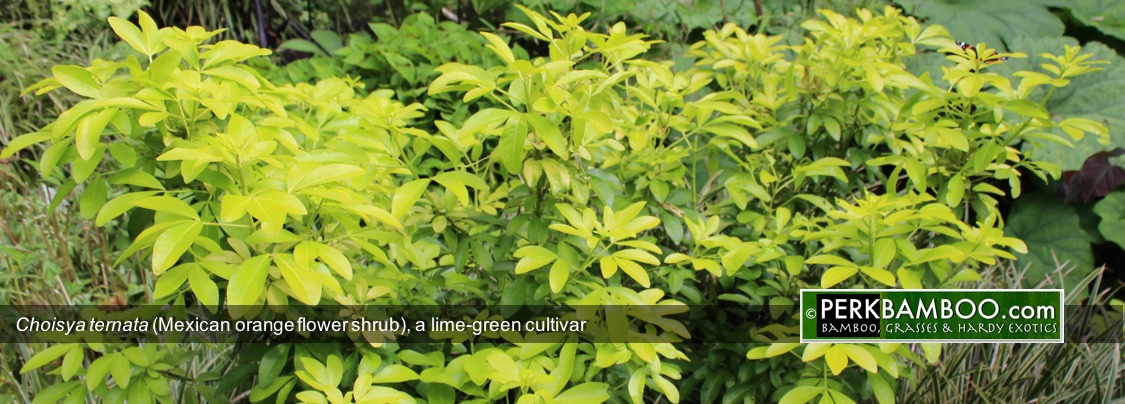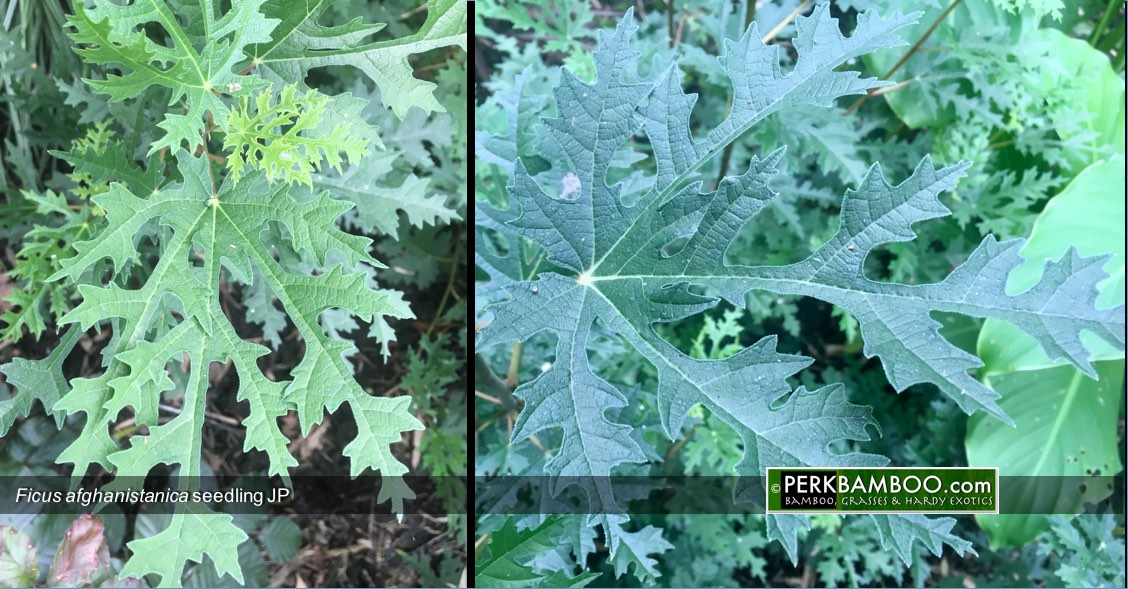EXOTIC SHRUBS AND TREES
Camellia cuspidata hybrid × williamsii 'Spring Festival' (syn. Chunjie) is a very rich flowering evergreen Camellia with small rose-shaped pink to salmon colored flowers with a diameter of 5-6 cm. This Asian relative of the tea plant is also characterized by striking copper-colored new leaf shoots. The unique upright, columnar habit makes this Camellia suitable as a hedge. It is one of the hardiest Camellias. In order to obtain a dense hedge, 3 to 4 plants per meter is sufficient. Can be pruned to the desired height. The plant location can vary from shade to sun.

Choisya ternata 'Aztec Pearl’, Mexican orange blossom, is an attractive evergreen shrub with a distinctive fine structure. Both flowers and the leaves have an aromatic smell. The leaves are glossy green, leathery and ternate. The flowers are pure white, and appear in May-July and smells like orange blossom. 'Aztec Pearl is one of the hardiest selections, originated from a cross between C. ternata x C. arizonica. The maximum height is usually not more than 1.5 meters. The plant is preferably in full sun on well-drained soil is not too wet. Pretty near a terrace or a Mediterranean garden or as a hedge. Sometimes other selections are available too like ‘White Dazzler’ or ‘Sundance’, ‘Gold Fingers’ or ‘Aztec Gold’
Clerodendrum bungei (peanut butter plant) is a hardy relative of the famous Clerodendrums from the tropics and due to its particular leaf scent called Peanut Plant. A beautiful bold leaf plant with dark green leaves and red veines, flowering late in the season with pinkish-carmine flower heads. Clerodendrum bungei grows 100-150 cm high and forms offshoots. Grows well in sun and even in shaded positions. Can be pruned annually. Deciduous.
Ficus carica 'Brown Turkey' (Hardy fig). As with apples and pears there are dozens of fig cultivars and selections. Most cultivars have been developed for the warm southern Europe. There are some selections that also flourish in northern Europe with long, cold, wet winters and a short growing season. The selection ‘Brown Turkey’ even carries fruit in a cool wet summer. Can be grown as solitary shrub or small tree. Fruits are chocolate brown, oval, medium size. The flesh is deep red, sweet and tasty. Sale of plants grown from own cuttings.
Out of a bunch of seedlings from Ficus afganistanica, we selected a very delicate leaved form. It has been growing in our garden since 2014. We hope to have the first new plants from cuttings available for sale soon.

Poncirus trifoliata is the most hardy wild Citrus from China, it grows 1-3 meters high. If Poncirus has been large enough to bloom, each spring many large, white, fragrant citrus flowers are produced. Generally the fruit sets well and turn yellow in autumn producing dozens of small 'limes'. The aromatic fruits are used for marmalade and sucade. The leafs fall in autumn after golden yellow discoloration. In winter the dark green spiny branch structure is visible and very beautiful to see. Also suitable as a hedge plant. Sometimes available as young plants or a few large plants.
Nandina domestica, also called Heavenly Bamboo, is a graceful multi-stemmed, upright evergreen shrub from Asia (China, Japan) with double pinnate, finely incised leaves. White inflorescence is followed by red berries. The leaves emerge reddish and autumn colors the green leaves to yellow or orange, sometimes red. The higher forms which are close related to the botanical species are very worthwhile. The newer dwarf forms are not. Sometimes available.
Albizia jullibrissin 'Rosea' (Persian Silk Tree, Sleeping Tree) is one of the hardiest selections with double pinnate leaves (a characteristic which we know from (sub) tropical trees). The large pinnate acacia-like leaves appear in late spring. The form 'Rosea' is a seedling of the hardiest variety of the hardiest species. It is a fast-growing small tree that is often not much larger than 3 to 5 meters. Due to the umbrella-like manner of growth and the open structure, it is an ideal tree to be applied in smaller gardens, in parks or along terraces. Pruning is also well tolerated. The inflorescence is very beautiful; At the end of summer a mature tree is adorned with numerous pink-red flower tufts, which are followed in particularly good summers by flat seedpods. Some other good forms are Albizia julibirissin 'Ombrella' or 'Boubri' (propagated from root cuttings so this selection flowers earlier). Spectacular is the rare deep purple-red-leaved form Albizia julibrissin 'Summer Chocolate', the hardiness of this type is okay in sheltered locations. A newcomer is the spectacular bronze form Albizia 'Evi's Purple'. The hardiness of this clone from China form is good. The availability of Albizia species varies annually.

Clerodendrum trichotomum ‘fargesii' is a small, exotic tree has a remarkable flowering (fragrant), followed by exceptional star-shaped fruits in late summer. The leaves are slightly hairy and quite large. This small Chinese tree grows between 3-4 meters in height and is useful in small gardens in sun to partial shade in a well-drained, humus-rich soil.
Eucalyptus niphophilla (Snow Gum) from the South Australian mountains is one of the strongest evergreen eucalyptus for our climate. The literal translation of E. niphophila is the snow-loving. " The eucalyptus is akin to the debeuzevillei but grows more shrub-like with smaller leaves with a red stem. It grows slowly making it more suitable for smaller gardens. He endures wind and state prefers a sandy not too rich drained soil in sun. It blooms from about five years old and these flowers are cream colored. As for winter hardiness it corresponds with Eucalyptus debeuzevillei and has a growth rate of approximately 0.5 meter per year. The leaves are blue-green with yellow steal and feel what leathery. The bark peels year round. Eucalyptus debeuzevillei prefers a sandy not too rich drained soil in full sun and grows upto 4-7 meters high, depending on the location and age. Eucalyptus perriniana, (spinning gum) is native to southeastern Australia and Tasmania. It is a strong and fast-growing species. The tree gets its name from its young leaves when the branches growing through the center of the leaf. The growth may be up to two meters per year, if this might go too fast then the tree can be pruned in March. This creates a wider crown. A well-drained soil is preferred.
Paulownia tomentosa (Anna Paulowna tree) is a special tree in some respects. Firstly, it is the largest leaved tree for our climate, and secondly it is the only lavender-blue flowering tree for our gardens. Two special features that make Paulownia tomentosa can be used more than is currently the case. Paulownia is also highly rated as a patio tree because it produces its leaves in late spring and, despite the large leaves, gives a light shadow. That makes this tree is also ideally suited as a shade tree for growing all kinds of shade and forest plants under the canopy. The tree blooms from 5 to 7 years old with flower clusters in spring on the bare wood. Even if the flowers fall off, they remain several days lovely smelling on the ground.
Anna Paulowna tree has a second application: by cutting off the annually branches to the ground it forms only a few new shoots that grow in summer a few meters (sometimes up to 3 to 4 meters) straight up and are occupied with huge leaves reminiscent of young teak trees that we know from the tropics. In this way, Paulownia does not come to fruition, but gives a tremendous architectural bold leaf effect in the garden. This makes use in a small garden also possible.
Sometimes other special species are available like Trochodendron araloides, Gymnocladus dioica, Magnolia grandiflora, Morus nigra, Kalopanax septemlobus and Firmiana simplex


